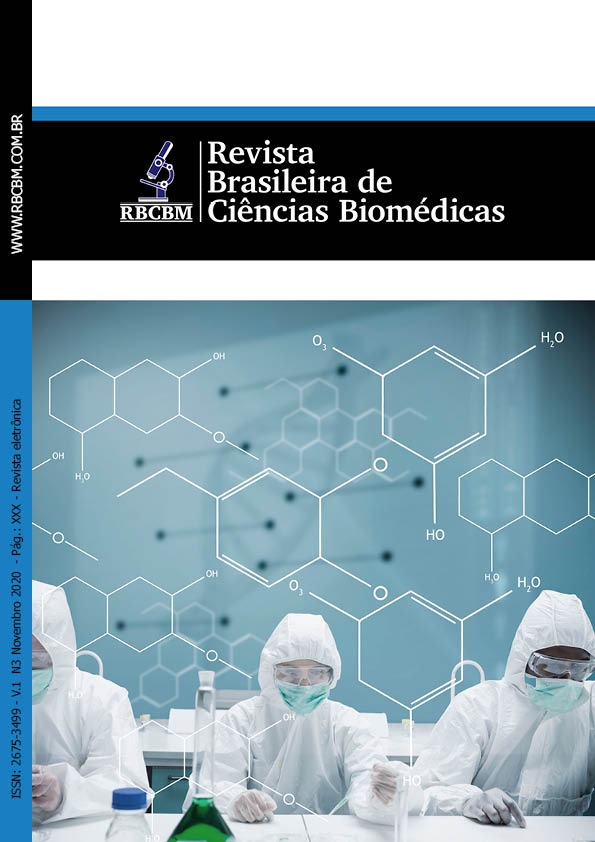Comparative analysis of the content of different brands of vinegars marketed in Brazil compared to that specified on the label
Main Article Content
Abstract
The labels of industrialized products around the world carry important information about the safety, effectiveness and concentrations of the components contained in their formulation. Most of the time, this information is recommended in rules written by a collegiate group of regulatory entities such as FDA (Food and Drugs Administration), MAPA (Ministério da Agricultura e Pecuária), ANVISA (National Health Surveillance Agency) and EMA (European Medicines Agency). There are specifications for medicines, cosmetics, health products and foods that should be faithful to the characteristics of the contents present in their primary packaging. In some cases, deviations in concentrations can cause damage to the health and safety of its consumers. Thinking about this theme, undergraduate pharmacy students at Anhanguera Educacional University chose 9 brands of food use vinegars marketed in Brazil and analyzed their concentrations using the acid-base titration technique and compared the results found with the values shown on the label. their respective brands. The values found showed a high incidence of deviations regarding the concentration of CH3COOH (acetic acid) at 4%. Small deviations in the concentration of some foods, such as CH3COOH do not harm health, however, when specified on labels, the values must be followed as a measure of good manufacturing practices (GMP) and in compliance with current regulations.
Article Details

This work is licensed under a Creative Commons Attribution-NonCommercial-NoDerivatives 4.0 International License.
Copyright Statement - Policy Proposal for Open Access Journals
Authors who publish in The Brazilian journal of Biomedical Sciences (RBCBM) agree to the following terms: 1 - Authors retain the copyright and grant the journal the right to first publication, with the work simultaneously licensed under the Creative Commons Attribution License allowing sharing of the work with recognition of the authorship of the work and initial publication in this journal. 2 - Authors are authorized to assume additional contracts separately, for non-exclusive distribution of the version of the work published in this journal (eg, publishing in institutional repository or as a book chapter), with acknowledgment of authorship and initial publication in this journal. 3 - Authors are allowed and encouraged to publish and distribute their work online (eg in institutional repositories or on their personal page) at any point before or during the editorial process, as this can generate productive changes, as well as increase the impact and citation of published work.
This is an open access article under the CC-BY license
References
ANVISA. Consulta Pública nº 44. 2004. Disponível em: Acesso em: 11 de dezembro de 2020.
BACCAN, N., ANDRADE, J. C., GODINHO, O. E. S., BARONE, J. S. Química analítica quantitativa elementar. 3. ed. São Paulo: Edgard Blücher, 2001. Associação Nacional das Indústrias de Vinagre (ANAV): Conheça mais sobre o vinagre. Disponível em: http://www.anav.com.br/. Acesso em: 12 de dezembro de 2020.
BORTOLINI, F.; SANT’ANNA, E. S.; TORRES, R. C. Comportamento das fermentações alcoólica e acética de sucos de kiwi (Actinida deliciosa): composição dos mostos e métodos de fermentação acética. Ciência e Tecnologia de Alimentos, 2001.
EMBRAPA:https://sistemasdeproducao.cnptia.embrapa.br/FontesHTML/Vinagre/SistemaProducaoVinagre/composicao.htm. Acesso em 15/12/2020.
FERNANDES, Julio Cesar Bastos; KUBOTA, Lauro Tatsuo. Eletrodos íonseletivos: histórico, mecanismo de resposta, seletividade e revisão dos conceitos. Quim. Nova, v. 24, n. 1, 120-130, 2001.
JOHNSTON, C. S.; BULLER, A. J. Vinegar and peanut products as complementary foods to reduce postprandial glycemia. Journal of the American Dietetic Association, v. 105, n. 12, p. 1939-1942, 2005.
JUVINO, D, S; COSTA, J, N; ALMEIDA, J, P; OLIVEIRA, V, P; JUNIOR, H, L; Controle de Qualidade de Vinagres Comercializados na Cidade de Rolim de Moura – RO disponível em: https://facsaopaulo.edu.br/wp-content/uploads/sites/16/2018/05/ed5/8.pdf Acesso em: 12 de dezembro de 2020.
SKOOG, Douglas A.; WEST, Donald M.; HOLLER, F. James; CROUCH, Stanley R., Fundamentos de Química Analítica. Vol. Único, 8 ed. São Paulo: Cengage Learning, 2012.
SPINOSA, W. A. Isolamento, seleção, identificação e parâmetros cinéticos de bactérias acéticas provenientes de indústrias de vinagre. Tese (Doutorado em Ciências de Alimento) - Universidade Estadual de Campinas – UNICAMP; Campinas, 2002.
TUFFANELLI, Arturo. Fundamentos de Química Analítica Instrumental. UERJ.
MARCONATO, José Carlos; BIDÓIA, Edério Dino. Potencial de eletrodo: uma medida arbitrária e relativa. QUÍMICA NOVA NA ESCOLA n° 17, maio 2003.
MAPA<https://sistemasdeproducao.cnptia.embrapa.br/FontesHTML/Vinagre/SistemaProducaoVinagre/legislacao.htm>. Acesso em 15/12/20 as 17:59.
RIZZON, L, A. Sistema de Produção de Vinagre. Embrapa - Uva e Vinho 2006. disponívelem:https://sistemasdeproducao.cnptia.embrapa.br/FontesHTML/Vinagre/SistemaProducaoVinagre/composicao.htm. Acesso em: 12 de dezembro de 2020.
XAVIER, L. et al. Produção do vinagre de maçã. 2009. Centro de Ciências e Tecnologia Agroalimentar, Universidade Federal de Campina Grande, Pombal, 2009. Disponível em: http://www.ebah.com.br/content/ABAAAAT1AAA/producao-vinagre-maca. Acesso em: 12 de dezembro de 2020.


